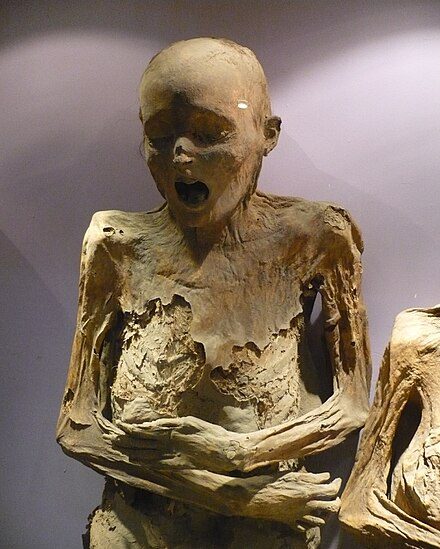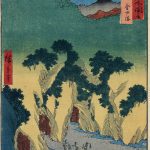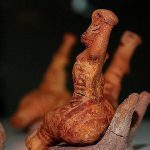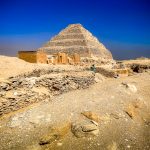
The discovery of the ‘Screaming Mummies’ in Guanajuato dates back to the mid-19th century during one of Mexico’s most harrowing epidemics. The cholera outbreak of 1833 led to mass burials, as victims were interred quickly to prevent the disease’s spread. Decades later, a local law requiring families to pay burial taxes forced the exhumation of these graves, unveiling a macabre surprise. What emerged from the dry soil were mummified remains, their faces frozen in expressions of anguish that seemed to cry out across time.
The mummification process of the Guanajuato bodies occurred naturally, aided by the region’s unique climate and soil composition. Low humidity and high mineral content preserved the bodies in startling detail, leaving skin, teeth, and even clothing intact. Unlike artificial embalming practices, this preservation was entirely accidental, making these mummies an organic testament to nature’s artistry. The hauntingly lifelike appearance of these remains would later elevate them from morbid curiosities to cultural icons.
Each mummy’s “screaming” visage is both a biological anomaly and an artistic phenomenon. Their contorted mouths and skeletal postures are often interpreted as expressions of agony, although some experts argue that post-mortem processes caused these grimaces. Despite scientific explanations, the visceral impact of these faces on viewers evokes a sense of dread and wonder. Their discovery turned Guanajuato into a focal point for macabre art, inspiring endless fascination with their grotesque beauty.
Legends and Lore: The Dark Stories Surrounding the Mummies
Local folklore suggests the ‘Screaming Mummies’ were victims of a fate worse than death: being buried alive. In the 19th century, premature burial was not uncommon, as medical knowledge and diagnostic tools were rudimentary. Some believe these mummies’ open mouths and claw-like hands are evidence of desperate attempts to escape their coffins. These chilling stories, though largely unverified, continue to cast a shadow of fear and intrigue over Guanajuato’s historical narrative.
Among the mummies, specific figures have become infamous for their tragic tales. One mummy, believed to be a pregnant woman, is said to have died in childbirth before burial, a story that adds layers of sorrow to her petrified scream. The mummy of a child, dressed in tattered burial clothes, has become a focal point for local legends of innocence lost. These individual stories humanize the mummies, making their preserved expressions even more haunting to witness.
While science dismisses the legends of premature burial, it provides its own grim explanations. Experts suggest that the “screaming” expressions result from natural processes like dehydration, which causes tissues to contract and jaws to open. However, these clinical details fail to dispel the myths surrounding these eerie figures. The scientific facts coexist with folklore, creating a tapestry of mystery that fuels artistic and cultural interpretations.
The Mummies as Art Objects: Exploring Their Aesthetic Value
The Guanajuato mummies challenge traditional notions of art by embodying the intersection of death and beauty. Philosophers and artists have long explored mortality as an artistic subject, and these mummies serve as a chilling muse. Their preserved forms evoke comparisons to other artistic meditations on death, such as the medieval danse macabre and the symbolic still-life genre known as vanitas. The mummies’ accidental artistry has sparked debates about the line between cultural artifact and aesthetic masterpiece.
Visually, the mummies are a study in grotesque beauty, a concept that blends fascination with revulsion. Their skeletal forms, textured skin, and contorted poses create a tableau that feels both horrifying and mesmerizing. Artists often analyze the visual impact of their features, considering the raw emotion and humanity captured in their expressions. These elements transform the mummies from mere remains to artistic subjects that provoke deep, visceral reactions.
The display of these mummies as art objects raises significant ethical questions. Critics argue that showcasing human remains for public consumption risks dehumanizing the individuals they once were. Advocates, however, contend that the mummies’ presentation preserves history and provides a rare window into the past. The debate over their display underscores their complex status as both cultural relics and macabre works of art.
Modern artists continue to draw inspiration from the Guanajuato mummies, integrating their haunting imagery into contemporary works. Sculptors, painters, and digital artists alike have reimagined the mummies in pieces that blend tradition with innovation. These creations explore themes of mortality, decay, and the eerie beauty of the preserved body. The mummies’ influence transcends time, cementing their place in the artistic canon.
The Artistic and Cultural Legacy of the Guanajuato Mummies
The influence of the Guanajuato mummies extends beyond their immediate artistic impact, resonating with broader cultural movements. In Mexican art, they align with surrealist and gothic aesthetics, reflecting a national fascination with death and the macabre. Their grotesque forms echo the surrealism of artists like Frida Kahlo, whose works delve into the beauty and pain of human existence. These mummies also resonate with postmodern art’s embrace of the uncanny and the grotesque.
The Guanajuato Mummy Museum plays a pivotal role in shaping public perceptions of these preserved remains. Careful curation transforms the mummies from mere curiosities into powerful exhibits that evoke empathy and reflection. Museum lighting, placement, and storytelling create an atmosphere of reverence, underscoring the mummies’ artistic and cultural significance. This presentation ensures that visitors engage with the mummies as more than historical artifacts—they are seen as symbols of human fragility and resilience.
The mummies’ global influence extends to literature, film, and cultural tourism. They have inspired horror stories, movies, and even local festivals that celebrate their eerie allure. Tourists flock to Guanajuato not only to see the mummies but also to experience the cultural richness they represent. These preserved figures have become ambassadors of Mexican heritage, embodying the nation’s unique relationship with life and death.
Ultimately, the Guanajuato mummies symbolize universal truths about mortality and the human condition. Their preserved screams remind us of life’s fragility and the inevitability of death. Yet, their artistic and cultural legacy offers a form of immortality, allowing their stories to resonate across generations. In their silence, they speak volumes, challenging us to confront the beauty and terror of our own impermanence.
Key Takeaways
- The Guanajuato mummies are accidental yet profound artistic representations of death.
- Their haunting expressions inspire awe, curiosity, and fear across cultures.
- Local legends and scientific explanations enrich their mystique and appeal.
- They have significantly influenced art, inspiring surrealist and gothic aesthetics.
- Their preservation challenges ethical norms about displaying human remains.
FAQs
- Why do the Guanajuato mummies have “screaming” faces?
Natural processes like dehydration caused their mouths to remain open, resembling screams. - Were the mummies buried alive?
Legends suggest so, but science attributes their expressions to post-mortem changes. - Where can I see the Guanajuato mummies?
They are displayed at the Guanajuato Mummy Museum in Mexico. - What makes these mummies significant to art and culture?
They inspire reflections on death, beauty, and humanity through their haunting preservation. - Are there ethical concerns about exhibiting the mummies?
Some question the morality, but they are widely regarded as vital cultural artifacts.




